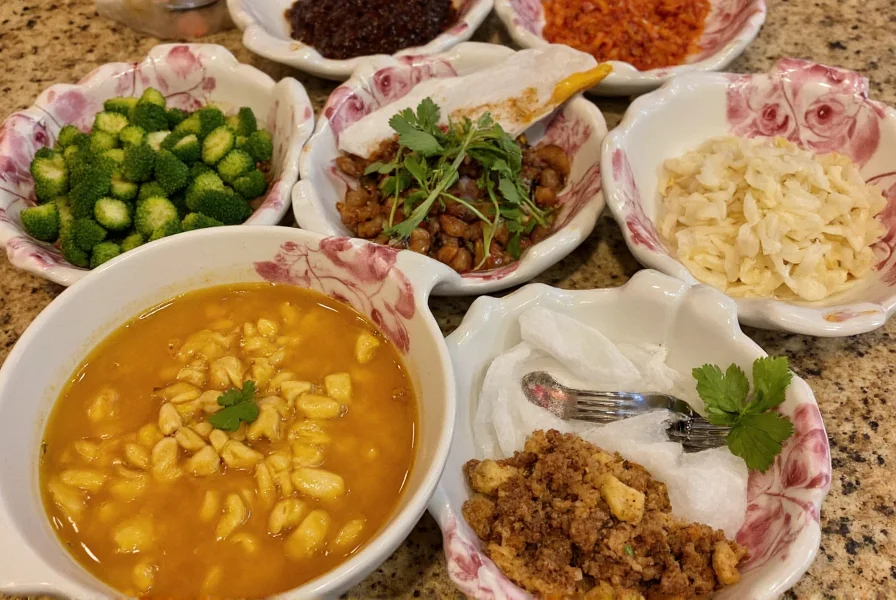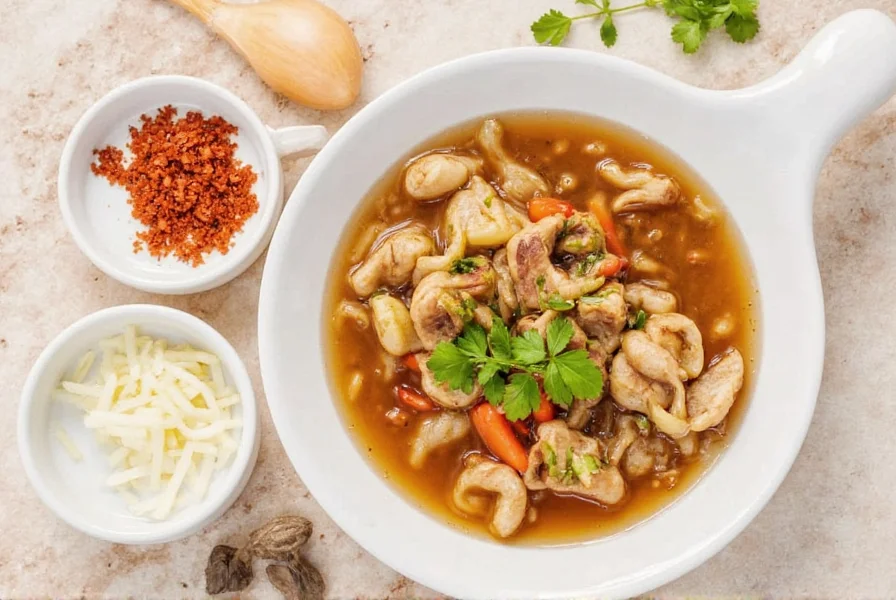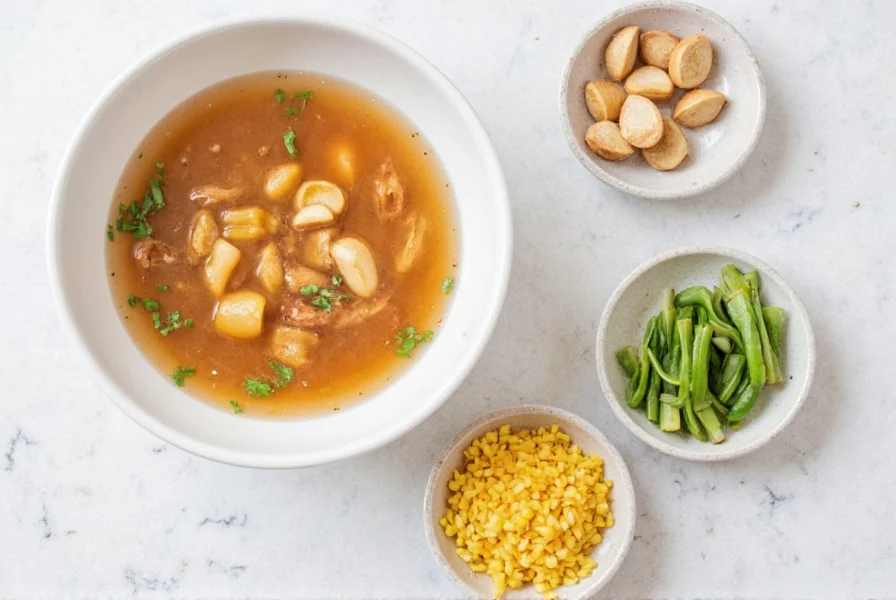The essential ingredients for authentic hot and sour soup include bamboo shoots, wood ear mushrooms, shiitake mushrooms, tofu, pork or chicken, egg, vinegar (typically Chinese black vinegar), white pepper, soy sauce, sesame oil, and a cornstarch slurry for thickening. Regional variations may incorporate additional elements like lily bulbs, cloud ears, or different vinegar types, but these core components create the signature spicy and tangy flavor profile that defines this classic Chinese dish.
Hot and sour soup represents one of China's most beloved culinary exports, captivating palates worldwide with its perfect balance of fiery heat and sharp tang. Understanding the precise ingredients hot and sour soup requires goes beyond mere recipe following—it's about honoring centuries of culinary tradition while adapting to modern kitchens. This comprehensive guide details every component needed to recreate this iconic dish authentically, whether you're a novice cook or an experienced chef seeking to refine your technique.
Core Components of Traditional Hot and Sour Soup
Authentic hot and sour soup ingredients follow a specific framework that creates the dish's distinctive flavor profile. The magic happens through careful layering of components that provide heat, acidity, umami, and texture. Unlike many Western soups, Chinese hot and sour soup relies on multiple ingredients working in harmony rather than a single dominant flavor.
Protein Elements
Traditional recipes typically feature thinly sliced pork tenderloin or chicken breast as the primary protein. Some regional variations incorporate shrimp or even offal like pork intestines for added authenticity. For vegetarian adaptations, extra firm tofu cut into thin strips serves as an excellent protein substitute while maintaining the soup's textural complexity. The protein should be marinated briefly in soy sauce and cornstarch before cooking to ensure tenderness.
Mushroom Varieties
Mushrooms provide the essential umami foundation. Authentic hot and sour soup ingredients always include both dried wood ear mushrooms and shiitake mushrooms. Wood ears contribute a distinctive crunchy texture, while shiitakes deliver deep savory notes. Many home cooks make the mistake of using only one mushroom type, but the dual-mushroom approach creates the complex mouthfeel characteristic of restaurant-quality soup.
| Mushroom Type | Preparation Method | Flavor Contribution |
|---|---|---|
| Wood Ear Mushrooms | Soak 30 minutes, slice thinly | Crisp texture, mild earthiness |
| Shiitake Mushrooms | Soak 20 minutes, stems removed | Deep umami, meaty flavor |
| Fresh Button Mushrooms | Sliced raw | Milder alternative, quicker prep |
Acidic Components
The "sour" element comes primarily from Chinese black vinegar, specifically Zhenjiang vinegar, which provides a complex, slightly smoky tartness unmatched by Western vinegars. Some American-Chinese restaurants substitute rice vinegar for milder flavor, but authentic hot and sour soup ingredients rely on the distinctive character of black vinegar. The vinegar must be added near the end of cooking to preserve its bright acidity—adding it too early causes the sour notes to dissipate during simmering.

Heat Elements
White pepper—not chili peppers—provides the signature "hot" component in authentic recipes. This often surprises Western diners expecting visible chilies. High-quality white pepper delivers a clean, penetrating heat that complements rather than overwhelms other flavors. Some regional variations incorporate chili oil or fresh Thai chilies, but traditional Sichuan-style hot and sour soup relies solely on white pepper for its warmth.
Regional Variations in Ingredients
Understanding what's in hot and sour soup requires acknowledging regional differences across China. The Sichuan version features more aggressive heat and pronounced vinegar notes, while Cantonese interpretations tend toward subtlety with additional bamboo shoots and lily bulbs. American-Chinese restaurant adaptations frequently include ingredients like carrots, peas, and extra cornstarch for thicker consistency that wouldn't appear in traditional Chinese preparations.
Specialty Ingredients Worth Seeking
For truly authentic results, certain specialty ingredients hot and sour soup requires deserve attention. Lily bulbs (also called lily flowers) add delicate floral notes and interesting texture. Dried cloud ear mushrooms provide additional crunch. Some traditional recipes call for preserved mustard greens or pickled vegetables to enhance complexity. While substitutions exist, these specialty components elevate the dish from good to exceptional.
Common Ingredient Mistakes to Avoid
Many home cooks make critical errors when gathering hot and sour soup ingredients. Using regular black pepper instead of white pepper creates unwanted bitterness. Adding vinegar too early diminishes its impact. Over-thickening with cornstarch produces a gloppy texture rather than the desired silky consistency. Perhaps most importantly, skipping the essential mushroom varieties results in a flavor profile that lacks depth and authenticity.
Ingredient Substitutions Guide
When certain authentic hot and sour soup ingredients prove difficult to find, strategic substitutions maintain integrity while accommodating availability. Apple cider vinegar can approximate Chinese black vinegar's complexity when combined with a touch of soy sauce. Dried porcini mushrooms substitute adequately for shiitakes. For gluten-free versions, tamari replaces soy sauce without compromising flavor. Vegetarian adaptations work beautifully by replacing meat broth with mushroom broth and omitting animal proteins.

Proper Ingredient Preparation Techniques
The way ingredients hot and sour soup requires are prepared significantly impacts final quality. Dried mushrooms must be properly rehydrated—not just briefly soaked—to release their full flavor potential. Tofu benefits from pressing to remove excess water before slicing. The cornstarch slurry must be properly mixed with cold water before adding to prevent lumps. Vinegar and white pepper should be added in stages, tasting between additions, to achieve perfect balance.
Storage Recommendations for Specialty Ingredients
Many authentic hot and sour soup ingredients maintain quality when stored properly. Dried mushrooms keep for months in airtight containers away from light. Chinese black vinegar lasts indefinitely when sealed tightly. Leftover prepared soup stores well for 3-4 days refrigerated, though the texture of mushrooms may change slightly upon reheating. Freeze individual portions of broth base for quick future preparation.











 浙公网安备
33010002000092号
浙公网安备
33010002000092号 浙B2-20120091-4
浙B2-20120091-4